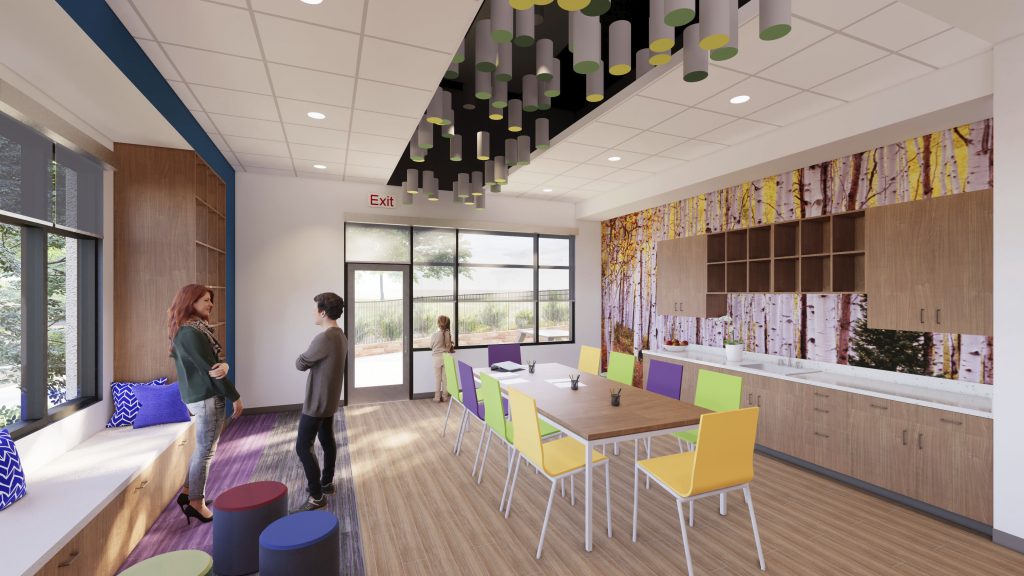MOA recently had the opportunity to expand up on one of our most celebrated projects, The Denver Hospice’s Lowry Care Center. The Amy Davis Hospice Support Center provides The Denver Hospice, the region’s largest nonprofit provider of life-enhancing hospice and palliative care, with a two-story “support center” addition to the existing building
The support center will house office space for approximately 100 employees, who provide bereavement and administrative services, in addition to the grief center, which provides bereavement therapy spaces. These hospice programs are currently located in Glendale, so the relocation of these services to the same site as the inpatient care center will offer a new convenience for patients and their families.
While our first project for The Denver Hospice focused on the patient, this second project allowed us to focus on the support structure for those patients, including the hospice staff and the patient’s loved ones. We kicked off the design process with the aim of uncovering the challenges of these users in the hospice environment.

Serving Family Needs
Bereavement therapy for family members and loved ones is a key service offered by The Denver Hospice. We worked closely with hospice counseling staff to better understand the bereavement services they provide, the day-to-day use of their current spaces and their hopes for the new space.
Based on these discussions, the new grief center will offer space for sensory and processing activities for both children and adults, including arts and crafts as well as expressive music activities such as drumming. The spaces will be flexible in use, allowing counselors to conduct individual as well as group or family therapy. The grief center also will connect to an outdoor patio, designed in collaboration with Norris Design, that will provide loved ones a secluded and private place to grieve, screened from public view. The outdoor space also will be used for children for more active, outdoor therapy activities.
Wanting these spaces to reflect a “home away from home” perspective, we strove to create a cozy and welcoming environment, with furniture and finishes more suggestive of a “living room” than a facility.
Understanding the Hospice Employee
A career in hospice care is an incredible commitment, and we wanted to recognize that through our design. The men and women who see patients through to the end of their lives do a monumental service to the patients and their families. But the achievement and value of the work does not mean that is without stress and fatigue. The emotional resilience required day in and day out of these employees is an integral aspect of their work experience that the new addition sought to recognize.
In conversation with our user group of hospice employees during the design process, we came to understand the importance of a space where these employees could meaningfully retreat from the emotional burden of their work. This space had to be more than the typical “break room,” as these employees are do work that can hardly be considered typical. This was the genesis of the employee lounge, which we developed as an “oasis” within the surrounding building, a place where employees will be able to take a moment to recharge.
The “oasis” will provide various soft seating options, along with a color scheme and interior finishes that make it distinct from the building’s office and patient areas. The lounge also will incorporate a work area for those looking to work in a more secluded setting. The “oasis” is just one element of a broader plan to rethink the working environment for hospice employees, which will extend to a greater variety of work and collaboration spaces. The “oasis” also will give employees access to a 750-sf outdoor deck, allowing them to have a secluded moment outside.
The design process for this project was rooted in active listening, engaging with our empathy for the users of this space and our understanding of the challenges and stressors they encounter every day. This attitude is essential in any health care project but has proven especially important in the case of a hospice project, collaborating with building users who wrestle with death every day.
A version of this article was previously published in the Colorado Real Estate Journal .
